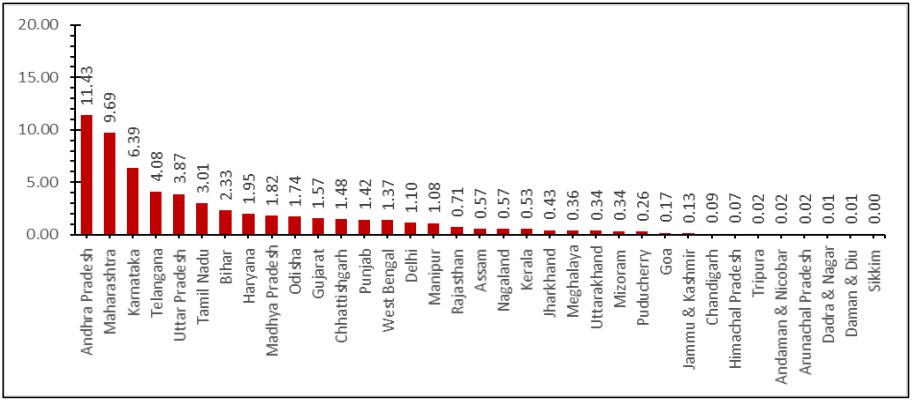World AIDS Day: 11 steps to reduce AIDS deaths in India
In India, about 60,000 AIDS-related deaths were estimated in 2019. People living with HIV in India currently do not have access to the complete package of screening tests and treatments needed to reduce deaths due to Advanced HIV Disease, say organisations working on the disease.


World AIDS Day is a key opportunity to encourage progress in HIV/AIDS prevention and treatment. Photo: freepik.com
Every year on December 1, World AIDS Day, is marked to bring together people from across the world to raise awareness about HIV/AIDS. The theme of World AIDS Day 2021 is: ‘End inequalities. End AIDS’.
The HIV — human immunodeficiency virus — causes AIDS and interferes with the body’s ability to fight infections. It is caused by infected blood, semen, and drug needles. Most people get the virus by having unprotected sex with someone who has HIV.
According to India HIV Estimation 2019 report, there were an estimated 2.3 million people living with HIV in 2019 in the country.
In India, 58,960 AIDS-related deaths were estimated in 2019. According to India HIV Estimation 2019 report, Andhra Pradesh was estimated to have the highest number of AIDS deaths at 11,430. It was followed by Maharashtra at 9,690, Karnataka at 6,390, Telangana at 4,080, Uttar Pradesh at 3,870 and Tamil Nadu at 3,010.

Also Read: ‘Sex workers in Asansol sitting on a ticking time bomb of HIV/AIDS’
In a bid to reduce deaths from advanced HIV disease and AIDS in India, people living with HIV and organisations working on HIV, have written to the Union Health Secretary Rajesh Bhushan. The letter has also been sent to officials of National AIDS Control Organisation, a division of India’s Ministry of Health and Family Welfare that provides leadership to HIV/AIDS control programme in the country.
“We are concerned that PLHIV [people living with HIV] in India currently do not have access to the complete package of screening tests, prophylaxis and treatments needed to reduce deaths due to Advanced HIV Disease,” read the letter dated December 1.
At least 20 people living with HIV and organisations working on HIV, including All India Network of Sex Workers, Sikkim Drug Users’ Forum, Uttar Pradesh Welfare for People Living with HIV/AIDS Society, Andhra Pradesh Drug Users Forum, have issued the letter.
Also Read: The impact of COVID-19 pandemic and the lockdown on reproductive health services
11 steps to reduce AIDS deaths
The organisations have demanded NACO to consider the following 11 steps to reduce AIDS deaths in the country:
1. Focus on vulnerable people living with HIVs who have low CD4 (a CD4 count is used to check the health of the immune system in people infected with HIV).
2. Screening for TB and Cryptococcal Meningitis: ART centres — that provide treatment services to people living with HIV/AIDS — do not have the tools to screen for life-threatening bacterial and fungal infections. Ensure that screening with TB-LAM and CrAg Cryptococcal Antigen Lateral Flow Test is carried out systematically at all ART centres in people living with HIV with CD4 below 200.
3. Registration of TB- LAM – NACO should support the registration of TB-LAM test in the country by the CDSCO and request the DCGI to waive local studies and validation requirement as the WHO already recommends use of the first generation TB lipoarabinomannan (TB LAM) test for diagnosing TB in people with HIV.
4. CD4 testing – Ensure that all people living with HIVs on ART can access CD4 testing and not just at the time of ART initiation.
5. Viral Load – Ensure that all people living with HIVs on ART are able to access viral load testing as recommended by the WHO. Many states are reporting that viral load monitoring has been disrupted or delayed due to COVID-19 and the end of contract of viral load services with the agency Metropolis.
6. Prevention of AIDS-related illnesses – Prioritise and strengthen preventive therapy for TB (TPT), Fluconazole pre-emptive therapy for cryptococcal meningitis and Co-trimoxazole Preventive Therapy (CPT) as it protects people living with HIVs with stage 3 or 4 diseases or CD4 <350 cells/mm from Pneumocystis pneumonia (PCP), toxoplasmosis and other bacterial infections.
7. Access to drugs for AHD – Monitor the availability of essential drugs for AHD (fluconazole, conventional amphotericin B or Liposomal Amphotericin B, flucytosine, valganciclovir and antibiotics) at the state level. Some medicines may need to be centrally procured by NACO and made available for AHD.
8. Ensure pediatric formulations (LPV/r, ABC/3TC, DTG) are not merely exported but available to the ART programme.
9. Ensure NACO’s centres of excellence have clinical expertise and appropriate laboratory capacity in the management of critically unwell AHD patients.
10. NACO and SACS [State AIDS Prevention and Control Societies] must ensure referral for hospital level facilities to provide critical care to people living with HIVs with AHD and that they are not turned away due to stigma and discrimination.
11. Funding – Incorporate AHD into Global Fund requests and US President’s Emergency Plan for AIDS Relief (PEPFAR) Country Operational Plans.
The World Health Organization (WHO) says World AIDS Day is a key opportunity to encourage progress in HIV/AIDS prevention, treatment and care around the world, and commemorate those who have died.

